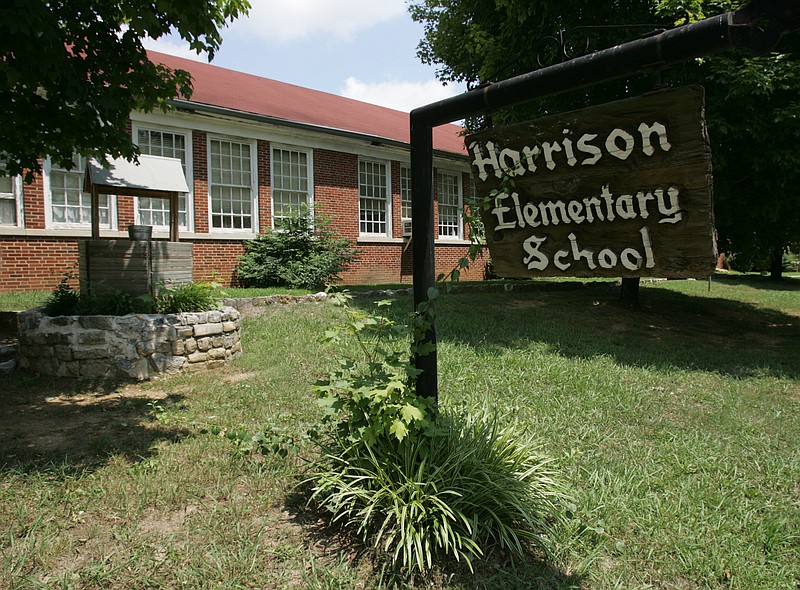If the suggestions to Hamilton County Schools Superintendent Dr. Bryan Johnson and the Hamilton County Board of Education last week from education advocacy nonprofit UnifiEd sound familiar, that's because they are.
Nearly everything suggested in an open letter to the superintendent and the school board has been mentioned in one form or another even in the last year, but it never hurts to push the importance of better organization when it comes to what is essentially a $400-plus million business.
So, if it prods action, and action sooner rather than later, all the better.
At issue is $100 million that will be allocated to the schools by the Hamilton County Commission for capital needs - after the body passed a de facto property tax increase on Sept. 6 - and whatever additional bond money subsequently might be generated to build new schools.
The all-encompassing question is how will the money be spent.
UnifiEd has suggested an audit of the district's capital needs and a multi-year plan of capital spending.
In February, school board members were given a prioritized list of facility needs for new capital projects, a list of maintenance needs that included the overall costs for each major repair and an occupancy utilization list that included current student populations at each school vs. the capacity of each school.
At the top of the prioritized facility construction list was $35 million for a new Harrison Elementary School, followed by $64 million for a new Chattanooga School for the Liberal Arts and $45 million for a new East Hamilton Middle School.
When the county commission passed its fiscal 2018 budget in June, no money was allocated for new construction or maintenance needs, which are reported to be more than $200 million.
Whether the school board will stick to that February list for allocation or create a new one remains to be seen. Rumors abound, though, as to what kind of Santa Clauses will be coming to each commission/school board district with the $100 million and even more in potential bond money.
Fortunately, the needs list has been whittled down over the last two years when nearly $1 million was allocated for repairs at CSAS, East Ridge, Hixson, Howard, Lookout Valley, Ooltewah and Tyner stadiums in May 2016 and more than $5 million approved to be spent from the school board's fund balance in March for, among other things, roofs at Hunter Middle School, Lookout Valley Middle High School's vocational building, Soddy-Daisy Middle School, Tyner Academy's vocational building and auditorium, and Wallace A. Smith Elementary School.
Nevertheless, a multipurpose stadium also has been sought for Howard School and updated or new tracks at East Hamilton, Hixson, Soddy-Daisy and Tyner high schools, and tennis courts at Hixson High.
In announcing the de facto tax increase earlier this month, Hamilton County Mayor Jim Coppinger mentioned "building one or two new schools, expanding capacity at schools in high-growth areas and addressing some of the most pressing capital needs at several schools with new roofs or major roofing repairs, energy efficient windows and renovation of athletic tracks and athletic facilities."
Suggestions for multi-year plans for school board spending aren't new, either. School board member Tiffanie Robinson has addressed the topic several times, and Tammy Grissom, executive director of the Tennessee School Boards Association, discussed timelines and metrics for evaluating progress and working on a shared vision and on the same strategic plan during a planning session with the board in January.
An independent review of school system spending by a group of business and community leaders also pushed for multi-year plans, as UnifiEd noted in its letter.
Indeed, the business/community group's executive summary from its May report notes that the Hamilton County Department of Education "needs to move toward a multi-year budget plan that closely aligns spending to outcomes." Such a plan, it said, "makes it easier to understand the need for year one investments that produce year two or three savings or results."
That group had a number of other suggestions, several controversial, including reducing the number of schools, cutting the number of teachers, increasing teacher and principal salaries, and better aligning total compensation to quality.
Whether or not the Hamilton County Board of Education looks beyond its February facilities, maintenance and occupation lists and asks for a new audit, as UnifiEd suggests, it is essential for members to discuss openly and publicly the use of the additional dollars and to develop a long-term strategy to address those lists and other school needs.
A school district in which the new superintendent envisions new ways to put its struggling students on an upward arc needs a school board thinking and acting in new and strategic ways. We hope the new money will be the catalyst for just that.
